Where birds still find refuge
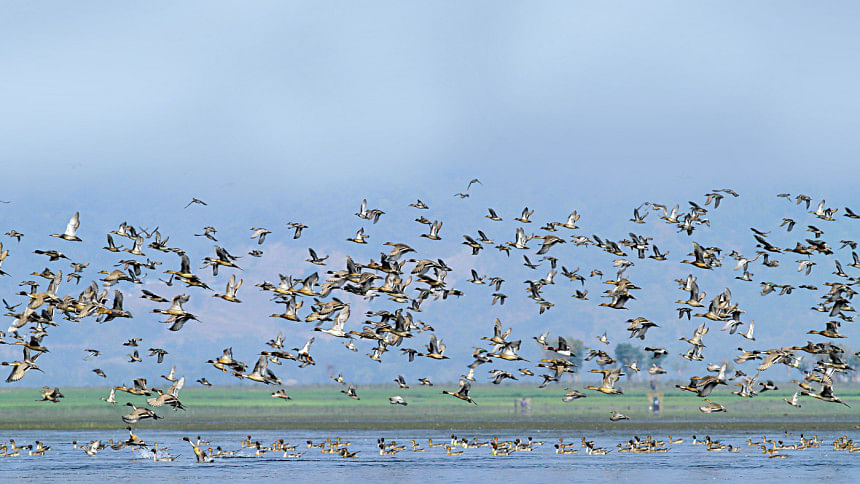
The sky hung low over Dhaka, wrapped in winter smog that blurred the sun and muffled the city's sounds. A heavy silence lingered as we made our way through the chaos of Sadarghat, boarding an overnight ferry bound for the coast. We were escaping the choking haze in search of open skies and tidal wetlands -- places where migratory birds still gather each winter, undisturbed by the steel and concrete of city life.
As daylight faded, we climbed to the ferry's roof, eyes scanning the banks of the Buriganga. Life stirred along its edge -- dim, fleeting shapes, the kind you only catch at dusk. Gulls and kites circled overhead, graceful scavengers gliding through the gloom. They dipped low, feeding on whatever surfaced in the thick, murky water below.
The Buriganga moved sluggishly beneath us, more sludge than river. Plastic waste clung to its surface, forming dense patches that drifted like islands. The water, dark as oil, had long ceased to flow with vitality. Once the lifeline of Dhaka, the Buriganga was the city's main water source when the Mughals declared it their capital in 1610. Now, it felt more like a grave -- a slow-moving sarcophagus of a river.
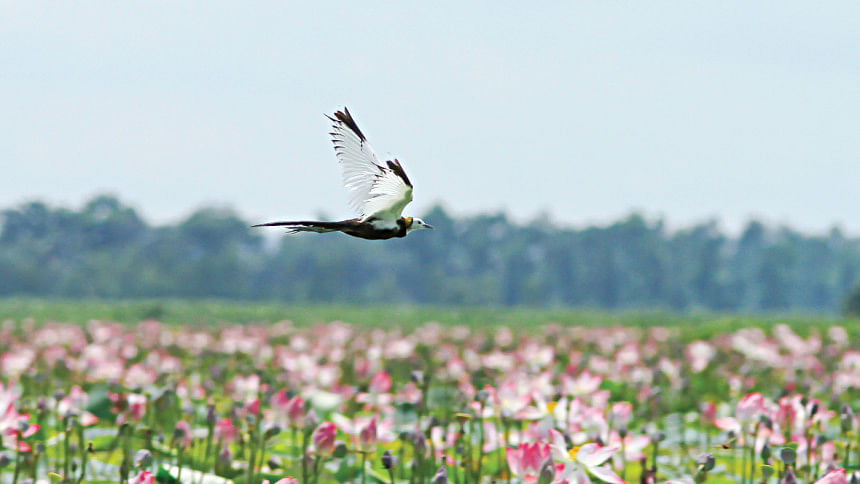
I found myself wondering what, if anything, still lived beneath that opaque surface. The image brought to mind the poisoned rivers of Mordor from Tolkien's The Lord of the Rings, a land of decay and ruin, drained of life. It seemed like a fitting metaphor.

Yet it was this very river, forgotten and forsaken, that carried us southward -- toward Hatia island, where life still clings to the tide. There, the air smells of date palm jaggery in winter, the fields still yield rice and mustard, and each year, thousands of migratory birds descend upon the vast tidal wetlands.
We were chasing birds, yes. But in truth, we were also chasing hope.
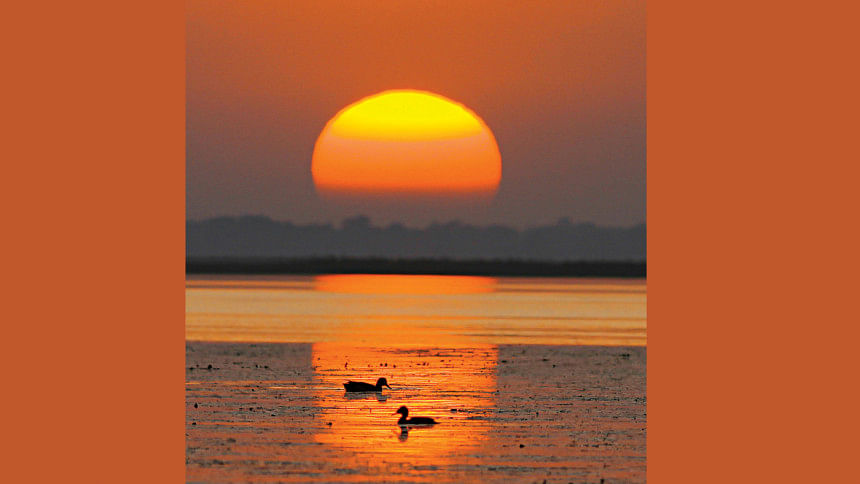
Disappearing wetlands
Wetlands, once the backbone of Bangladesh's ecology and rural economy, are vanishing. Across the country, from inland floodplains to coastal mudflats, these fragile ecosystems are being drained, encroached upon, or slowly suffocated by pollution. In a nation defined by water, the quiet disappearance of its wetlands may be its most dangerous, yet least visible, crisis.
The reasons are all too familiar: unplanned development, expansion of agriculture, the proliferation of shrimp farms, riverbank erosion, and overfishing. Even though wetlands support millions of livelihoods and offer natural buffers against flooding and climate disasters, they remain a low priority in national planning.
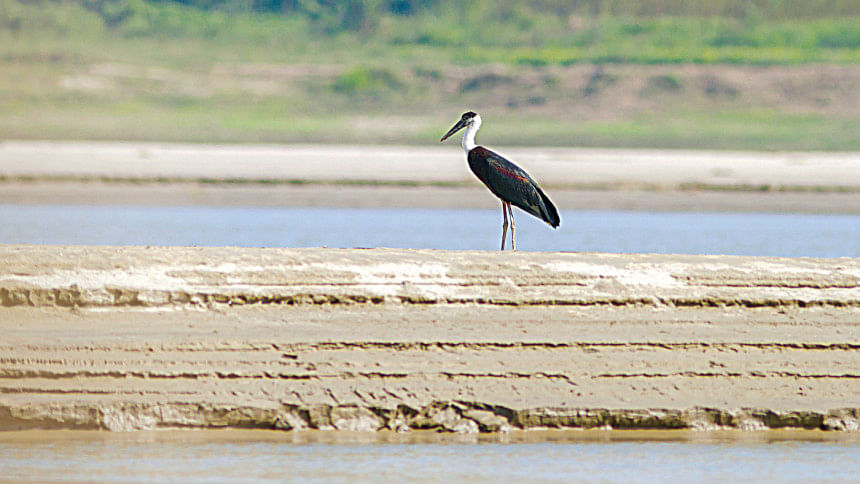
Among the most threatened are the seasonal riverine floodplain grasslands -- dense, grassy islands that emerge along the Padma and Jamuna rivers during dry months. These habitats are critically important, harbouring rare species like the Bristled Grassbird, a bird once thought extinct in Bangladesh until recently rediscovered.
Our recent research reveals that these areas are disappearing fast. Cultivation and overgrazing are eroding their ecological integrity, and protection remains minimal to non-existent. Ironically, these habitats may be some of Bangladesh's richest ecosystems, both biologically and culturally, and yet they are among the most neglected.
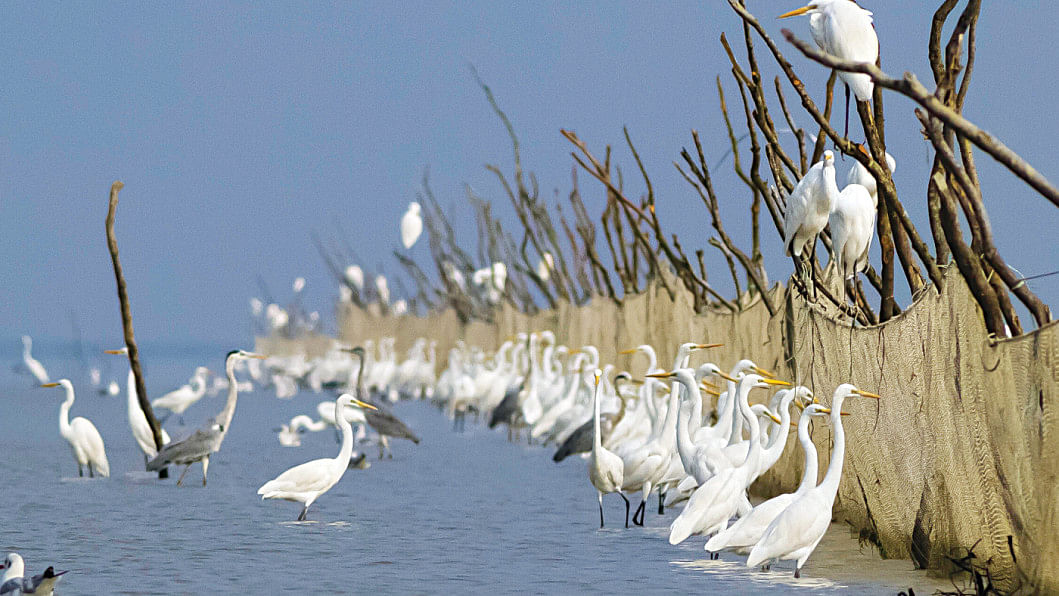
Where life still clings to the tide
We arrived in Hatia at dawn, stepping off the ferry into salt-laced air and open skies. The tide had just begun to retreat, peeling away from the shoreline like a curtain. Before us stretched the vast intertidal flats -- rippling sands blending into gleaming mud, a horizon of possibility.
Then, as the morning light caught the water's edge, the birds came.
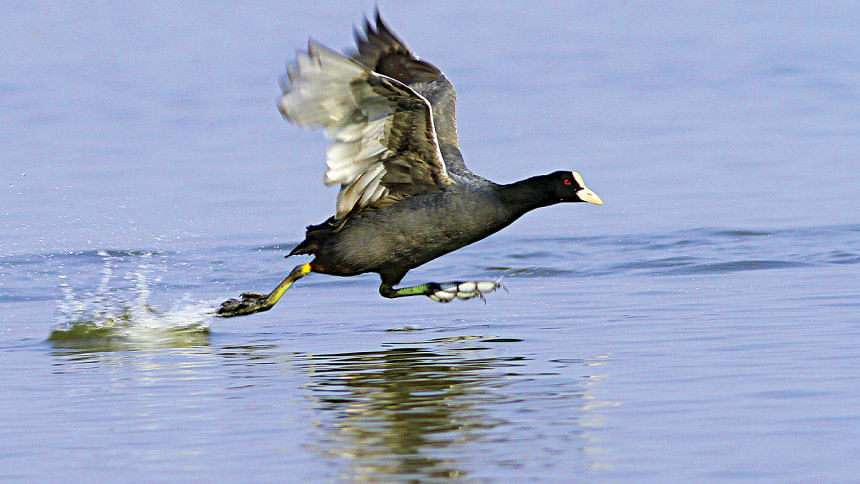
Thousands of them, sweeping in on wide wings and sharp cries. Black-tailed Godwits began probing the shallows, their long bills rhythmically piercing the mud. Farther along, Curlews dug for crabs with slow, deliberate movements. And there, weaving graceful arcs through the flats, the Pied Avocet, a personal favourite, swept its upturned bill side to side in fluid motion.
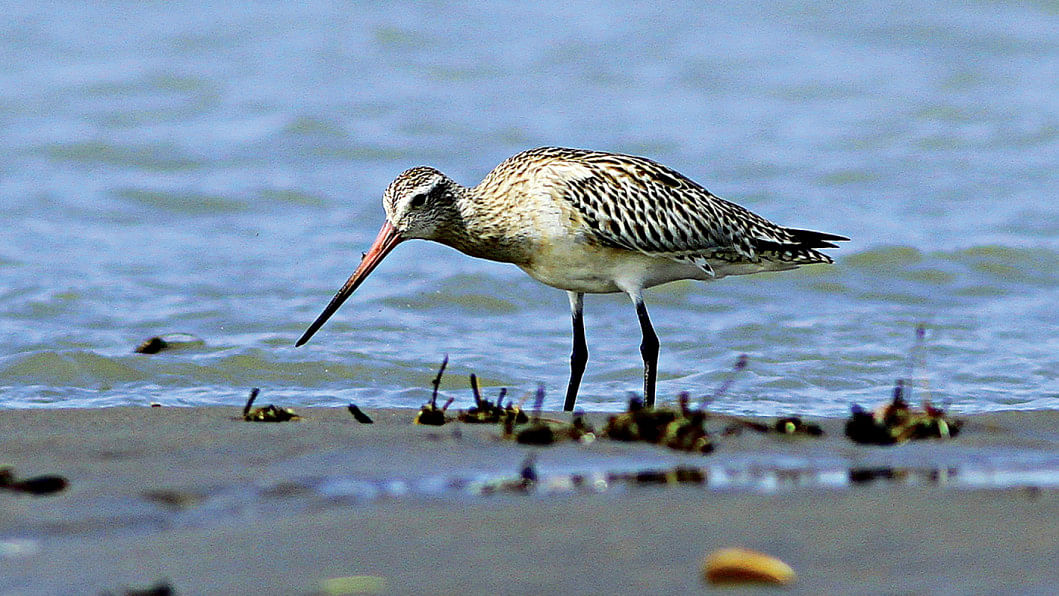
These tidal wetlands are more than just beautiful. They are vital ecological nodes along the East Asian-Australasian Flyway, the migratory route that stretches from Arctic Russia to Australasia. Endangered species like the Spoon-billed Sandpiper depend on these habitats to rest and refuel during their epic seasonal journeys. When we lose these stopovers, we don't just lose birds. We unravel entire migratory networks and the natural rhythms that bind us to them.
Degradation, pollution and coastal squeeze
While parts of the southern coast have recently come under marine protection, mounting pressures threaten to outpace conservation efforts. Tidal wetlands are being converted at alarming rates -- to shrimp enclosures, salt pans, or paddy fields. These transformations often ignore ecological value in favour of short-term economic gain.

Meanwhile, the country's most visited beaches, such as Cox's Bazar, are drowning in plastic waste. Discarded bottles, packets, and fishing gear are carried by rivers from inland cities, forming a relentless conveyor belt of pollution. This detritus spills directly into delicate coastal zones, embedding itself in sand and surf. Microplastics now lace the water column and shoreline, entering food chains in ways we barely understand.
One of the most insidious threats is ghost gear -- lost or abandoned fishing nets that drift silently through the water, tangling marine life in their invisible threads. Shorebirds are especially vulnerable. Their migratory nature brings them repeatedly to polluted coastlines, where plastic concentrations are highest. These environments, which once offered refuge, are now riddled with unseen dangers.
Coastal squeeze adds another layer to the crisis. As sea levels rise due to climate change, tidal wetlands should naturally migrate inland. But in many places, embankments, roads, and settlements block their path. With nowhere to go, these habitats are slowly being drowned. The result is a gradual suffocation -- too subtle for headlines, yet devastating in scale.
What we risk, what we can save
This is not just about birds, or about scenic beauty. This is about survival and resilience. Wetlands are Bangladesh's first line of defence against storm surges, flash floods, and rising seas. They absorb excess water, stabilise shorelines, and nourish biodiversity. Their loss endangers not just wildlife, but human communities.
It is time to place wetlands at the core of national environmental policy -- not as afterthoughts, but as critical infrastructure. This means protecting what remains, restoring what has been damaged, and recognising pollution as an environmental security threat rather than just an eyesore.
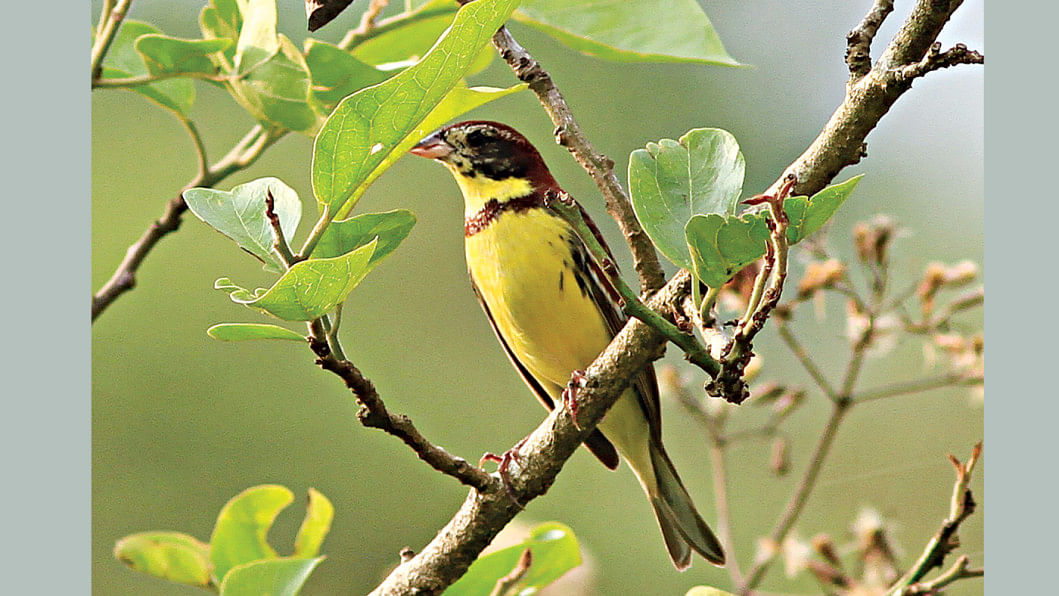
Wetland systems like Tanguar Haor must be revitalised. The grabbed lands around Sonadia Island, now converted to salt farms, need to be reclaimed and returned to nature. Emerging islands like Ganguirar Char, near Bhashan Char, must be brought under legal protection before they are lost to unregulated development. And the few remaining grasslands along the great rivers must be mapped, managed, and defended.
Bangladesh is a nation born of water. Its identity, economy, and culture are deeply entwined with its rivers and wetlands. To lose these spaces is to lose something fundamental.
We came to Hatia chasing birds, but what we found was something deeper: a glimpse of a fragile future -- still alive, still wild, and still worth saving.

 For all latest news, follow The Daily Star's Google News channel.
For all latest news, follow The Daily Star's Google News channel. 



Comments